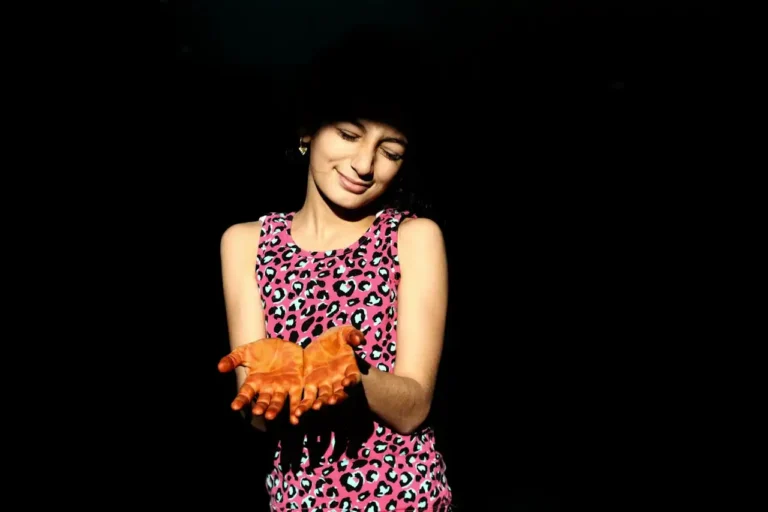What to Wear When You Have “Nothing to Wear”
You stare at your closet, clothes hanging everywhere, yet somehow you have absolutely nothing to wear. Sound familiar?
This fashion dilemma strikes everyone, regardless of wardrobe size. You’re not alone in this struggle.
The solution isn’t buying more clothes. It’s about rediscovering what you already own.
Let’s transform your “nothing to wear” moments into styling opportunities that showcase your existing pieces in fresh, exciting ways.
Master the Art of Layering

Layering transforms basic pieces into sophisticated outfits instantly. Start with your simplest items and build complexity through strategic additions.
Take that plain white t-shirt you’ve worn countless times. Layer it under a blazer, add a statement necklace, and suddenly you have a polished look perfect for meetings or dinner dates.
Try layering a fitted turtleneck under a sleeveless dress. This combination extends your summer pieces into cooler months while creating visual interest through contrasting textures.
Experiment with unexpected layering combinations. Don’t forget about outerwear as a layering tool.
Wear a collared shirt under a sweater, letting the collar peek out for a preppy-chic vibe. Layer a slip dress over a fitted t-shirt for an effortlessly cool aesthetic.
A denim jacket over a floral dress creates casual charm, while a leather jacket adds edge to feminine pieces.
Embrace the Power of Accessories
Accessories single-handedly transform any outfit from boring to brilliant. They’re your secret weapon against wardrobe boredom.
Scarves offer infinite styling possibilities. Wrap one around your neck, tie it as a headband, or thread it through belt loops as a colorful belt.
A simple jeans-and-tee combo becomes instantly more sophisticated with a silk scarf draped around your shoulders.
Jewelry changes everything about your look. Stack delicate rings for a bohemian feel, or choose one bold statement piece to elevate a minimalist outfit.
Mix metals fearlessly – gold and silver together create modern, curated vibes. Use a wide belt over a blazer for a fashion-forward twist.
Belts do more than hold up pants. Cinch an oversized sweater at the waist to create shape. Belt a flowy dress to emphasize your silhouette.
Bags tell your style story. Swap your everyday tote for a structured clutch to instantly dress up any outfit.
Choose a crossbody bag in a bright color to add personality to neutral ensembles.
Mix Patterns and Textures Like a Pro
Pattern mixing intimidates many people, but it’s easier than you think. Start small and build confidence with each successful combination.
Begin with patterns in the same color family. Pair navy stripes with a navy polka-dot scarf. The shared color creates harmony while different patterns add visual excitement.
Try mixing pattern scales. Combine a large floral print with thin stripes, or pair a bold geometric pattern with delicate dots. Different sizes prevent patterns from competing for attention.
Texture mixing adds depth without color complications. Pair smooth silk with chunky knits, or combine leather pieces with flowing chiffon.
These contrasts create rich, layered looks that photograph beautifully. Use neutral pieces as buffers between bold patterns.
A solid-colored blazer over a patterned top and patterned bottom creates cohesion while letting each piece shine.
Reimagine Pieces in New Ways
Challenge how you typically wear your clothes. This mindset shift unlocks countless new outfit combinations from your existing wardrobe.
Wear that button-down shirt in three different ways: traditionally buttoned with sleeves rolled up, tied at the waist over a dress, or completely unbuttoned as a light jacket over a tank top and jeans.
Transform dresses into separates. Wear dress pants with a graphic tee and canvas shoes for relaxed sophistication.
Wear a shirt dress open as a long cardigan over pants. Belt a loose dress and wear it as a tunic with leggings. Layer a fitted dress over pants for an unexpectedly chic silhouette.
Repurpose formal pieces for casual wear. Pair that cocktail dress with sneakers and a denim jacket for weekend brunch.
Consider unconventional combinations. Try wearing a slip dress as a skirt by pulling it up to your waist and tucking in a fitted top. Use a long cardigan as a dress by belting it at the waist.
Create Signature Color Combinations

Developing go-to color pairings simplifies outfit creation while ensuring you always look put-together.
Identify colors that make you feel confident and vibrant. Build combinations around these personal favorites.
If you love emerald green, pair it with navy for sophistication, with cream for elegance, or with black for drama.
Master the art of monochromatic dressing. Choose different shades of the same color for a refined, editorial look.
Pair light blue jeans with a navy sweater and royal blue accessories for effortless sophistication. This formula creates visually pleasing proportions every time.
Don’t fear bold color combinations. Unexpected pairings often create the most memorable outfits.
Try pink and red together, or orange with purple. These combinations show confidence and creativity.
Use the 60-30-10 rule for balanced color distribution. Choose one dominant color for 60% of your outfit, a secondary color for 30%, and an accent color for 10%.
Master the Five-Minute Outfit Formula
Develop quick outfit combinations you can rely on during rushed mornings or last-minute plans.
Create your “uniform” pieces – items that make you feel confident and look polished with minimal effort.
This might be well-fitted dark jeans, a crisp white shirt, and a blazer that works for multiple occasions.
Prepare outfit “recipes” in advance. Establish a weekly planning routine. Organize your closet by outfit frequency.
Write down successful combinations so you can recreate them quickly. Include specific accessories and shoes to eliminate decision-making stress.
Keep your most-worn pieces at eye level and easily accessible. Store seasonal or special occasion items in less convenient spots.
Spend ten minutes each Sunday planning outfits for the upcoming week. Check the weather forecast and your calendar to ensure appropriate choices.
Embrace Minimalist Styling
Sometimes the best outfits are the simplest ones. Learn to appreciate the beauty of understated elegance.
Focus on fit over trends. A perfectly fitted basic t-shirt and jeans look infinitely better than ill-fitting trendy pieces. Invest time in finding your ideal sizing in classic pieces.
Perfect the art of the capsule outfit. Choose three high-quality pieces that work harmoniously together.
This approach reduces decision fatigue while ensuring you always look intentional and polished.
Let one element be the star. If you’re wearing a statement necklace, keep everything else simple. If your shoes are bold and colorful, choose neutral clothing that won’t compete for attention.
Embrace negative space in your styling. You don’t need to fill every outfit with accessories and layers. Sometimes a clean, simple look makes the strongest impact.
Work with What You Have
Stop focusing on what’s missing from your wardrobe and start maximizing what’s already there.
Conduct a closet audit. Pull out pieces you haven’t worn recently and challenge yourself to style them three different ways.
You’ll rediscover forgotten favorites and see familiar pieces with fresh eyes. This visual reminder shows you concrete proof that you do have things to wear.
Document successful outfits with photos. Create a digital lookback on your phone to reference when you’re feeling uninspired.
Trade pieces with friends temporarily. Borrowing adds variety without spending money. You might discover new brands or styles that work for your body and lifestyle.
Focus on cost per wear rather than initial price. That dress you’ve worn twenty times has provided excellent value, regardless of what you paid for it.
Build Transition Outfits
Create looks that work across different settings and times of day. These versatile combinations solve multiple wardrobe challenges simultaneously.
Design day-to-night looks by choosing pieces that can be dressed up or down with simple changes.
Start with dark jeans and a nice blouse. Add sneakers and a cardigan for day, then swap in heels and statement jewelry for evening.
Master seasonal transition dressing. Combine summer and fall pieces to extend wear from both seasons.
Pair shorts with boots and a cozy sweater, or wear a sundress with a leather jacket and tights. Create work-to-weekend outfits that adapt with minor adjustments.
Choose elevated basics that work in professional settings but can be styled casually with different accessories and shoes.
Develop Your Personal Style Language

Understanding your style preferences helps you make confident choices from your existing wardrobe.
Identify your style icons and analyze what draws you to their looks. Break down their outfits into specific elements you can recreate with your own pieces.
Define your lifestyle needs honestly. If you work from home, prioritize comfortable pieces that still make you feel put-together.
If you have an active social life, focus on versatile pieces that work for multiple occasions.
Recognize your body’s favorite fits and silhouettes. When you know what works for you, shopping and styling become infinitely easier.
You’ll make better choices and feel more confident in your decisions. Pay attention to compliments you receive.
When people comment positively on your outfits, note what you were wearing. These successful combinations provide valuable insight into your most flattering looks.
Conclusion
Transform your “nothing to wear” crisis into creative opportunity.
Your perfect outfit already hangs in your closet, waiting to be discovered through fresh styling approaches.







